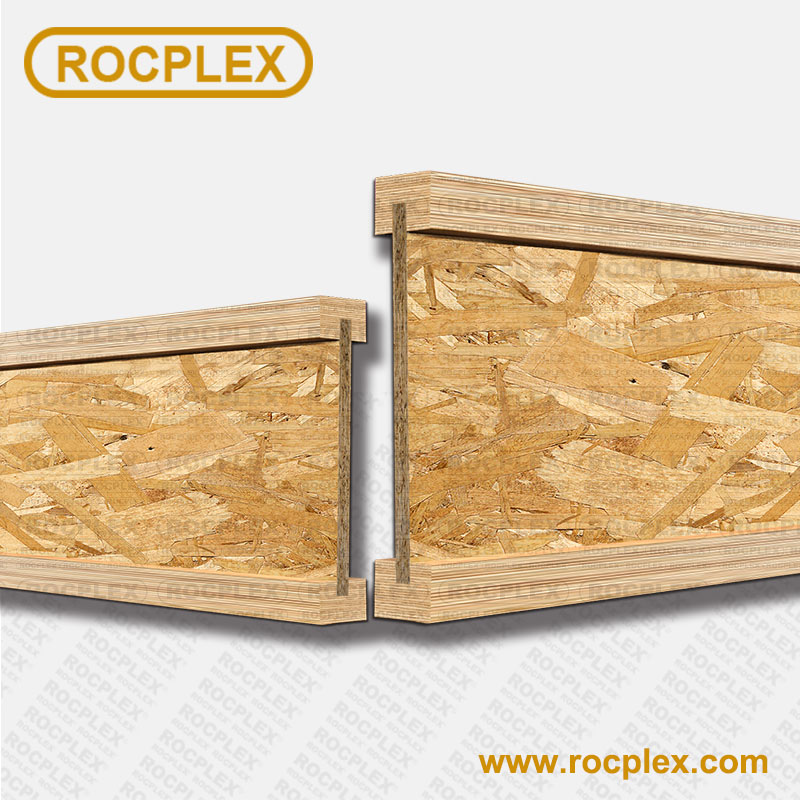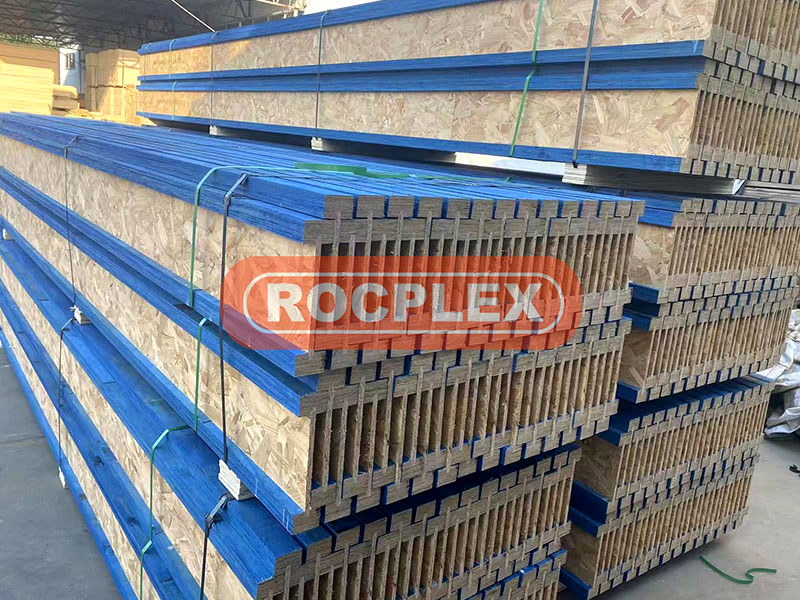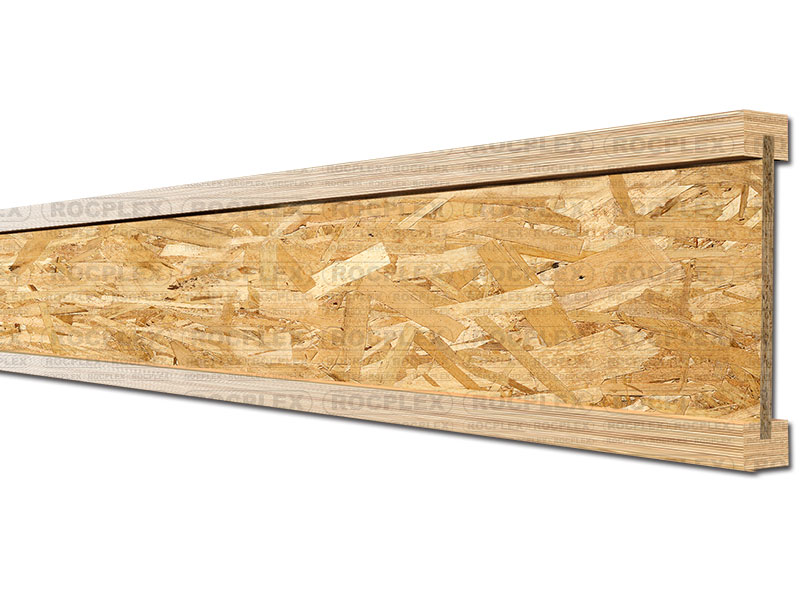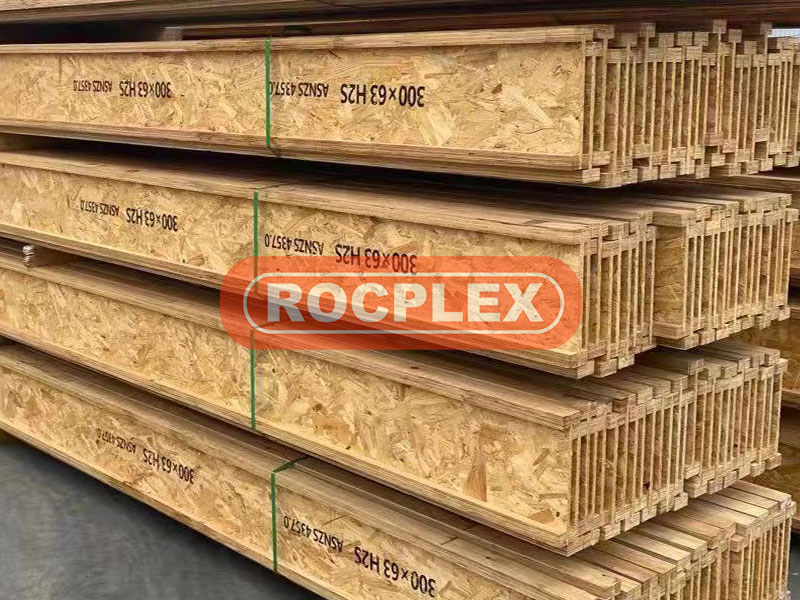What is I Joist?
The I joist, a marvel in modern construction, represents a significant advancement in building technology. Characterized by its ‘I’ shape, this joist combines robustness with flexibility. This making it an ideal choice for floors and roofs in residential and commercial structures. The I joist stands out for its ability to span considerable distances without the need for intermediate supports. It is a feature that traditional joists struggle to match. This capability not only allows for more spacious and open interior designs but also reduces the overall building time and cost.

I joist Innovative Design and Material Usage
Advanced Materials for Enhanced Performance
The I joist is crafted from high-quality materials that ensure both strength and durability. The flanges, typically made of solid wood or laminated veneer lumber, provide the joist with its distinctive ‘I’ shape and are crucial for bearing loads. The web, usually constructed from plywood or oriented strand board (OSB), connects these flanges, creating a lightweight yet sturdy structure.
Eco-Friendly and Sustainable Building
In an era where sustainability is paramount, I joists offer an eco-friendly option. The materials used in their construction are often sourced from sustainable forests, contributing to environmental conservation. Moreover, the production process of I joists generates less waste compared to traditional joists. This making them a more sustainable choice for builders and architects who are environmentally conscious.
I joist Revolutionizing Floor and Roof Systems
Floor I: Transforming Interior Spaces
The use of I joists in floor systems, often referred to as ‘floor I’, has revolutionized the way interiors are designed and constructed. Their strength and flexibility allow for longer spans without intermediate supports, opening up possibilities for more creative and spacious floor plans. This adaptability makes I joists particularly appealing for modern, open-concept designs.
Roof Joist: Enhancing Architectural Possibilities
Similarly, in roof construction, the I-joist plays a pivotal role. Its ability to span long distances without the need for additional support gives architects the freedom to design more complex and aesthetically pleasing roof structures. This flexibility is particularly beneficial in custom and high-end architectural designs, where unique roof shapes and styles are often desired.
I joist Comparative Advantages over Traditional Joists
When compared to traditional joists, I joists offer several advantages. Their ‘I’ shape provides superior strength and stiffness, reducing the likelihood of warping, twisting, or shrinking. This structural integrity ensures a longer lifespan and greater reliability. Additionally, the lightweight nature of I joists makes them easier to handle and install, resulting in faster construction times and lower labor costs.
Customization and Versatility
One of the most significant advantages of I joists is their customizability. They can be cut and tailored to fit specific building requirements, offering unparalleled versatility in construction projects. This flexibility is particularly beneficial in projects with unique architectural demands or in renovations where adapting to existing structures is necessary.
Impact on Modern Building Techniques
The introduction of I joists has had a profound impact on modern building techniques. Their efficiency and flexibility have led to more innovative architectural designs and have streamlined the construction process. By reducing material waste and offering superior strength and durability, I joists represent a significant step forward in the pursuit of sustainable and efficient building practices.
I joist Enhancing Safety and Durability in Construction
Superior Load-Bearing Capacity
The I joist’s design offers a superior load-bearing capacity compared to traditional joists. This strength is critical in ensuring the safety and longevity of buildings. By evenly distributing weight and reducing the risk of structural failure, I joists provide a reliable foundation for both residential and commercial constructions.
Resistance to Environmental Factors
Another significant advantage of I joists is their resistance to various environmental factors. Unlike traditional lumber, which can be prone to warping or rotting due to moisture. I joists maintain their integrity over time. This resistance is particularly beneficial in areas with high humidity or extreme weather conditions, ensuring the longevity and safety of the structure.
Fire Safety Considerations
While I joists are known for their strength and durability, it’s important to consider fire safety. In response to this, manufacturers have developed fire-resistant coatings and treatments that can be applied to I joists. Enhancing their resilience in the event of a fire and providing an added layer of safety to the building.
I joist Economic and Efficiency Benefits
Cost-Effective Construction Solutions
The economic benefits of using I joists are significant. Their ease of installation and reduced material waste lead to lower labor and material costs. Additionally, the ability to cover longer spans with fewer joists translates to savings in both time and resources. It making I joists a cost-effective solution for a wide range of construction projects.
Speed and Efficiency in Building
The lightweight nature and uniformity of I joists contribute to faster and more efficient building processes. This efficiency is particularly advantageous in large-scale construction projects where time is a critical factor. The quicker installation time not only speeds up the overall construction process but also reduces labor costs.
I joist Impact on the Construction Industry
Changing Construction Practices and Standards
The introduction of I joists has led to a reevaluation of construction practices and standards. Their versatility and efficiency have paved the way for more innovative and sustainable building methods. As a result, the construction industry has seen a shift towards using engineered wood products like I joists, which offer better performance and environmental benefits.
Future Trends and Developments
The future of I joists in construction looks promising. With ongoing research and development, improvements in materials and design are expected to enhance their performance even further. Innovations such as integrating smart technology into I joists for monitoring structural health are on the horizon, signaling a new era in intelligent building solutions.
User Experiences and Testimonials
To understand the real-world impact of I joists. It is essential to consider the experiences of those who have used them in their projects. Builders, architects, and homeowners alike have praised the I joist for its reliability, ease of installation, and contribution to more innovative architectural designs. Testimonials often highlight the transformative effect I joists have had on their construction projects, from simplifying complex designs to ensuring long-term structural integrity.
Educational and Training Opportunities
With the growing popularity of I joists. There is an increased need for educational and training programs for professionals in the construction industry. These programs are essential for ensuring that builders and architects are well-versed in the best practices for using I joists, maximizing their benefits while maintaining safety standards.
I-Joist Integration with Modern Architectural Design
Adapting to Complex Architectural Needs
Modern architecture often demands flexibility and innovation in building materials, and I joists meet these requirements admirably. Their ability to be customized for various lengths and sizes makes them particularly suitable for modern architectural designs. Which often feature unique and complex layouts.
Enhancing Aesthetic Appeal
Beyond their structural benefits, I joists contribute to the aesthetic appeal of buildings. Their slim profile and the ability to span large areas without intermediate supports allow for cleaner lines and more open spaces, a highly valued feature in contemporary architecture.

Environmental Impact and Sustainability
Reducing Carbon Footprint
The use of I joists is a step forward in reducing the construction industry’s carbon footprint. By utilizing materials more efficiently and minimizing waste, I joists contribute to more sustainable building practices. Additionally, the sourcing of materials from sustainably managed forests further underscores their environmental benefits.
Lifecycle and Recyclability
The long lifecycle of I joists is another aspect of their environmental appeal. Their durability means they need to be replaced less frequently than traditional joists, reducing the demand for new resources. Furthermore, the potential for recycling or repurposing I joists at the end of their life cycle is an area of growing interest, aligning with circular economy principles.
Floor Joists Global Adoption and Market Growth
Worldwide Adoption of I Joist Technology
The adoption of I joist technology is not limited to specific regions but is a global phenomenon. Countries around the world are recognizing the benefits of I joists in construction, leading to their increased use in a variety of building projects.
Floor Joists Market Growth and Predictions
The market for I joists is expected to continue growing. This growth is driven by the increasing demand for environmentally friendly and efficient building materials. As awareness of their advantages spreads, more builders and architects are likely to adopt I joists in their projects.
Challenges and Considerations
Addressing Installation Challenges
While I joists offer many benefits, proper installation is crucial to ensure their effectiveness. Missteps during installation can compromise the structural integrity of the joist. This highlights the importance of skilled labor and proper training in the installation of I joists.
I Joist Balancing Cost and Quality
While I joists are cost-effective in many ways, initial investment costs can be higher than traditional materials. It’s important for builders and clients to balance these upfront costs with the long-term benefits, such as durability and efficiency.

FAQs About I Joists
What is an I-joist used for?
I-joists are used in construction for floors and roofs, providing a strong, lightweight, and stable support structure that can span large areas without intermediate supports.
Is I-joist stronger than a traditional joist?
Yes, I-joists are generally stronger and more stable than traditional joists, thanks to their ‘I’ shape which provides greater load-bearing capacity and resistance to warping and twisting.
What is a joist?
A joist is a horizontal structural element used in building construction to support floors or ceilings. It spans an open space and is typically made of wood or steel.
Are I-joists more expensive?
The initial cost of I-joists can be higher than traditional joists. But they often lead to lower overall construction costs due to their strength, durability, and ease of installation.
What are the pros and cons of I-joists?
Pros: Higher strength and stability, longer spans without intermediate supports, reduced warping and shrinking, and environmental sustainability. Cons: Higher initial cost and need for skilled installation.
The I Joist Revolution
The I joist, with its innovative design and multitude of benefits, represents a significant advancement in the field of construction. Its integration into modern architecture, coupled with its environmental sustainability and market growth, underscores its vital role in the future of building and construction. As the industry continues to embrace I joists, their impact on efficient, sustainable, and aesthetically pleasing building practices is set to grow, marking a new chapter in the evolution of construction technology.
Post time: Jan-05-2024


